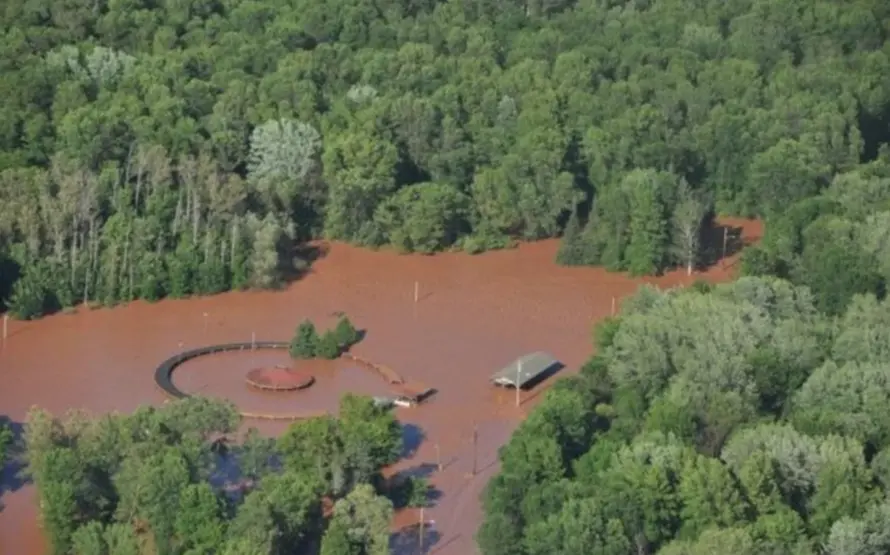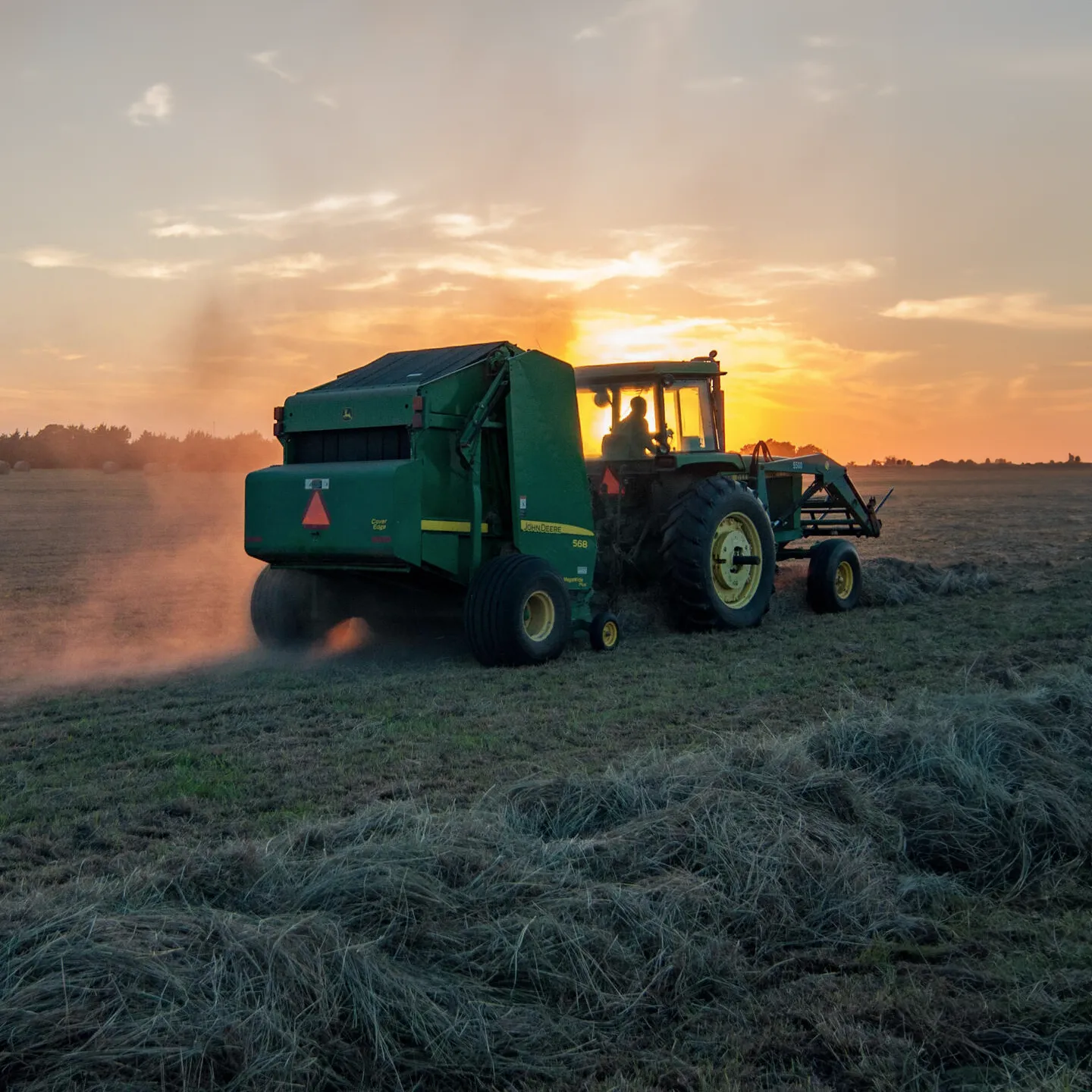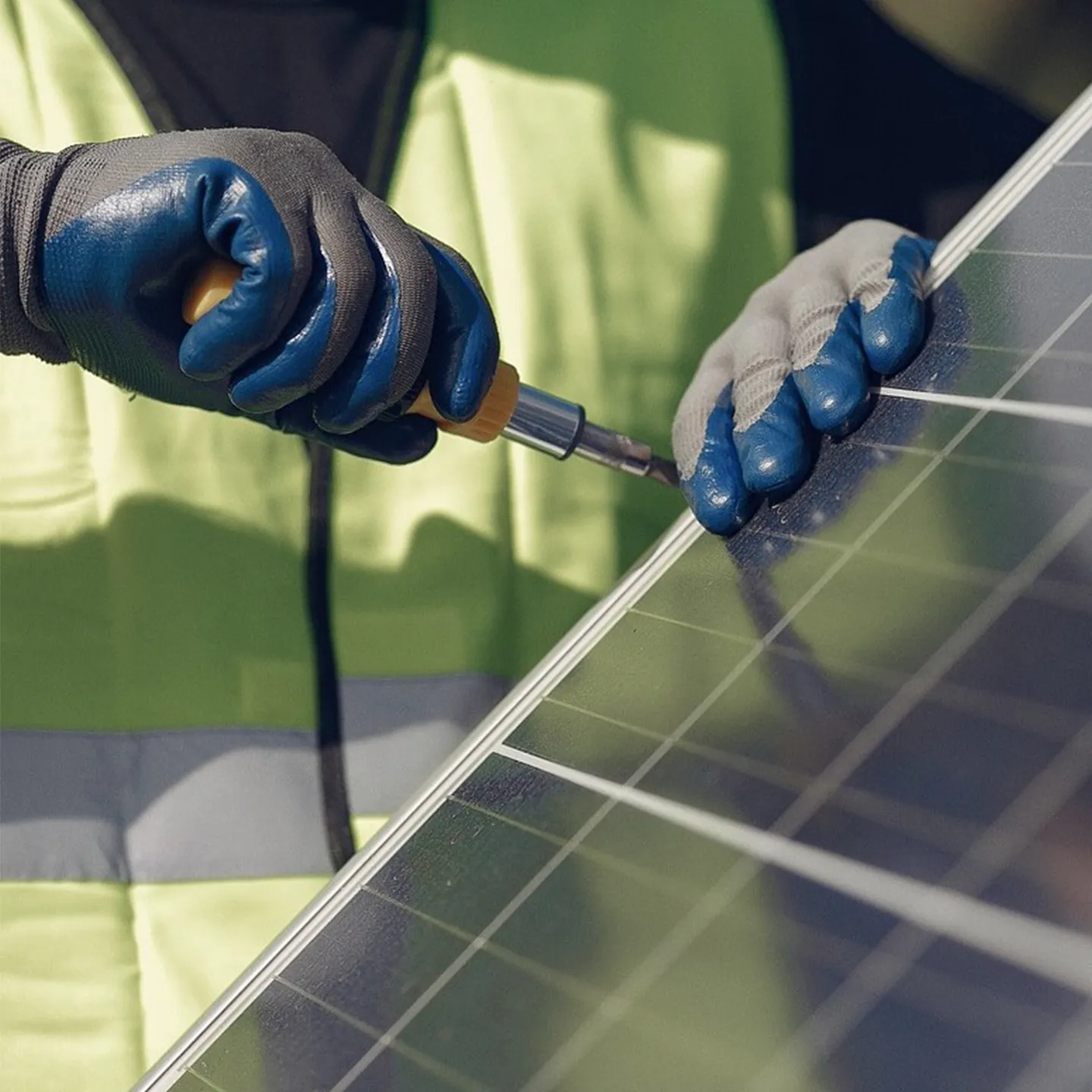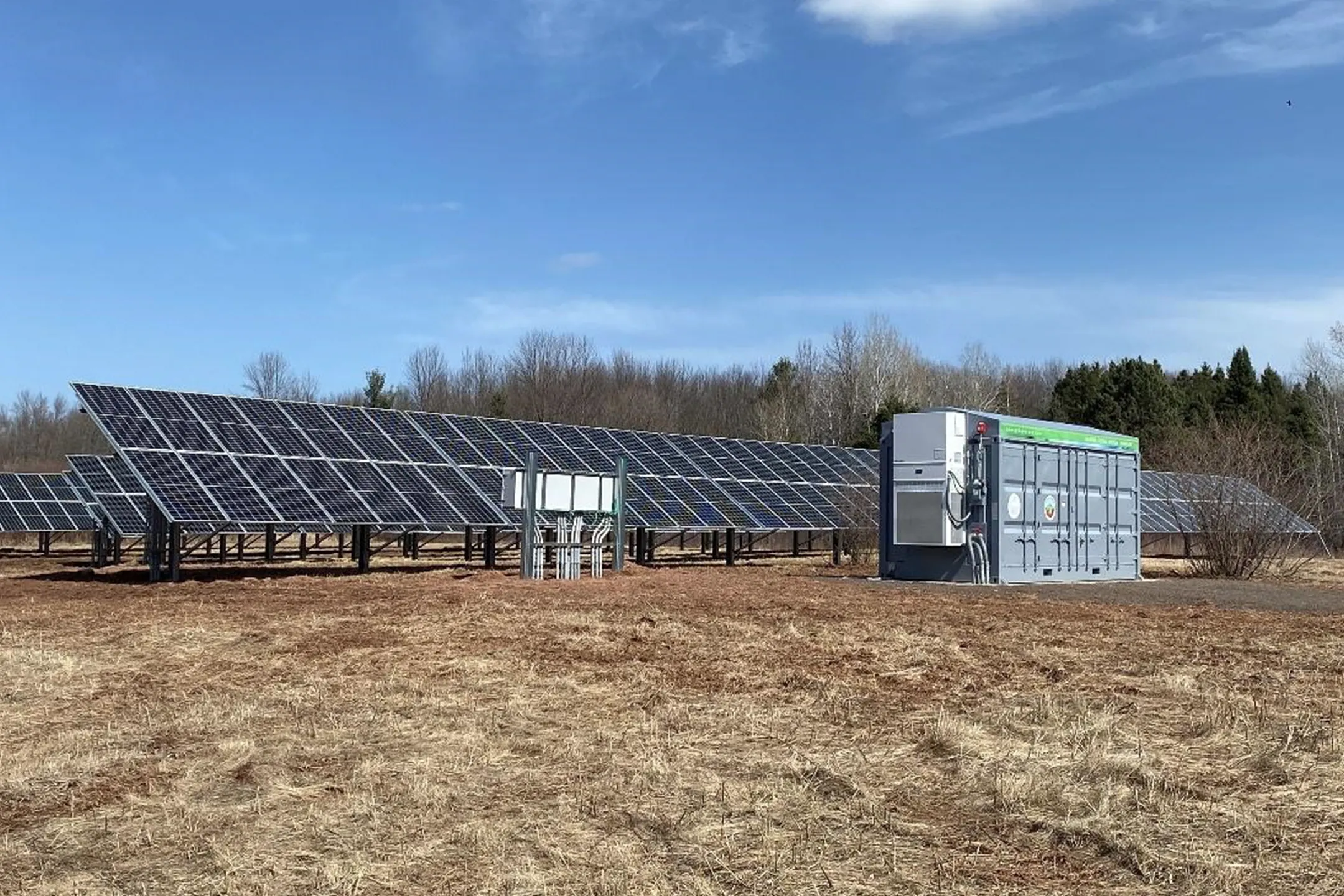Bad River Band of Lake Superior Tribe
A solar microgrid strengthens a tribe’s resilience to extreme weather
Key Takeaways
- Following a 2016 severe flooding event that resulted in extensive power outages at critical facilities, the Bad River Band of Lake Superior Tribe of Chippewa Indians searched for options to enhance their resilience in the face of extreme weather. However, most private equity investment resources have set challenging requirements, limiting tribes’ ability to find solutions through traditional mechanisms.
- Specific, well-designed grants from the U.S. Department of Energy’s Office of Indian Energy have helped bridge the gap, providing the needed resources so the Bad River Band of Lake Superior Tribe of Chippewa Indians could install a new 520-kilowatt (kW) solar microgrid and battery storage system that gives the Tribe an added layer of resilience.
- Since 2010, DOE’s Office of Indian Energy has invested over $120 million in more than 210 tribal energy projects. As climate change results in more devastating floods and other extreme weather events, projects like these can offer tribes around the country a path to resiliency.
The Challenge
Building Resilience in the Face of More Extreme Weather
In Northern Wisconsin by Lake Superior, the Ishkonige Nawadide Solar Microgrid, constructed after severe flooding and during the COVID-19 pandemic, is a testament to the Bad River Band of Lake Superior Tribe of Chippewa Indians’ resilience.
Translated as “It Catches Fire” in the Tribe’s language (referring to the ability to catch sunlight), the roughly $2-million-dollar project is a 520 kW solar microgrid installation with more than 1,000 kilowatt-hours (KWh) of battery storage, or roughly enough to power 30 average American homes for a day.
The project idea came after a July 2016 severe flooding event that overtook the reservation and caused road closures and extensive power outages at critical facilities, including the health and wellness center, administration building and wastewater treatment plant. As a result, tribal members receiving care at the health and wellness center had to be helicoptered out of the area to receive care in other locations.
“Everything that you could experience within a crisis like that, we experienced,” Daniel Wiggins Jr., tribal member and air quality technician, said.
Flooding events are becoming more frequent and severe as a result of climate change, including in the Midwest. These large flooding events can destroy crops, property and critical infrastructure, leaving communities vulnerable even after the water has receded. Microgrids powered by renewable energy provide a path to resiliency without releasing more fossil fuel emissions into the atmosphere.
However, many tribes lack the financial resources or technical capacity to unlock public and private funding needed to build new clean energy projects – a consequence resulting from a myriad of discriminatory practices and injustices faced by tribes in the U.S.
This reality was highlighted in a hearing on tribal climate funding by the House Select Committee on the Climate Crisis, where tribal leaders shared how applying for federal funds for large-scale renewable energy projects “can take a tremendous amount of time and staff power for environmental impact reviews and market analysis.”
The Department of Energy’s Office of Indian Energy offers both financial and technical assistance to tribes around the country. Since 2010, DOE’s Office of Indian Energy has invested over $120 million in more than 210 tribal energy projects, valued at nearly $215 million. Of those investments, over $93 million have been for energy hardware installations in over 110 American Indian and Alaska Native communities.

Community Benefits
Filling Gaps on the Path to Resiliency
The Bad River Band Tribe has always been progressive when it comes to renewable energy, Wiggins said. In the mid-1990s, the Tribe installed a 9 kW hybrid system at its hatchery — a combination of wind, solar panel and battery storage.
“We did a lot of strategic energy planning well before 2010,” Wiggins said.
After the 2016 flood, the Tribe put together an emergency preparedness plan and amended its energy strategic plan to cover the gaps identified during the flood. The Tribe asked Wiggins to be the renewable energy coordinator.
“Those two plans are really what leads my venture with the renewable energy activities and program,” Wiggins said.
In 2019, the Bad River Band Tribe submitted its application to a DOE funding opportunity announcement. Its application was selected based on the merit of the proposed project and funds were awarded in October 2019, said Tweedie Doe, project officer at the DOE’s Office of Indian Energy.
“We worked with the Tribe very closely to go through the grant process,” Doe said. “They were a first-time grantee for us, which is always exciting.”
Additional DOE assistance came in the form of helping the Tribe navigate the multitude of federal regulations and paperwork that come with federal funding.
“We worked a lot with the Tribe to develop trust in what we were doing,” Doe said. “We and the Tribe invested a lot of time in each other in the beginning.”
“We worked a lot with the Tribe to develop trust in what we were doing,” Doe said. “We and the Tribe invested a lot of time in each other in the beginning.”
For the Tribe, it was DOE’s vast experience working on similar projects that proved to be invaluable.
“DOE has excellent staff that really know their programs, and they really know the renewable energy field,” Wiggins said. “We felt very comfortable with the relationship with DOE, and felt if we had any questions, they were able to provide the answers themselves or the technical assistance behind that.”
For example, when the Tribe had questions on how to work out relationships with contractors, DOE was able to provide examples of how different tribes approached similar situations, encouraging them to reach out to those tribes.
“They were always able to give me great examples of what worked and what didn’t work,” Wiggins said. “So, using that information in itself was very valuable because we were able to pick a strategy that we felt worked for us and the benefit of the project.”
The project was advancing at a fast pace at the beginning of 2020 and then the COVID-19 pandemic hit. Work came to a halt causing delays. The Office of Indian Energy provided guidance and worked with the Tribe on reporting extensions and immediate deadlines. Ultimately, they were able to meet DOE deadlines.
The completed project includes 520 kW of solar on three buildings — the health and wellness center, the wastewater treatment plant, and the administrative building. The health and wellness center has a 300kW solar array with 250 kW battery storage and is the most resilient of all three systems.
“If the power went out, that system can definitely support the building,” Wiggins said. “We could probably hold that for probably a month.”
The wastewater treatment plant has a similar solar array and storage, though the building’s primary backup is a generator. The smallest project, the administration building, works on an emergency panel system and can survive a three-to-five-day outage and is designated as the Incident Command Post during emergency events.
No extreme outages have taken place since the microgrids have been completed, but there have been a number of smaller outages, especially in the summer, lasting two to three hours.
“The clinic’s staff didn’t even know there was an outage,” Wiggins said. “The only reason they knew there was an outage was because the lights flickered, but the microgrids took over fluently and backed up the building.”
Additionally, the project also presented an opportunity for workforce development in the community. Tribal members worked on the administrative building project during construction and trained to become facility managers.
Community interest in renewable energy has also grown. Wiggins is currently working to install solar in 40 homes, which some tribal members have requested and also received battery storage for resiliency.
“People are interested in batteries just because we have batteries on our clinic and on our wastewater treatment plant,” Wiggins said. “Without the project, they might have only been interested in solar, if even that.”
One of the main lessons learned through this project for Wiggins is that these technologies work. In fact, the Tribe is currently looking to expand the microgrid. With a state grant, the Bad River Band Tribe was able to conduct a study of the expansion of the microgrid into a larger mini grid — adding houses, additional facilities and potentially, the Tribe’s utility infrastructure.
“Solar does work in Northern Wisconsin,” Wiggins said.” I would say that one of the lessons we learned is yes, it absolutely can support a building. I think the clinic is a prime example of that.”
“Solar does work in Northern Wisconsin,” Wiggins said.” I would say that one of the lessons we learned is yes, it absolutely can support a building. I think the clinic is a prime example of that.”

Opportunities for Impact: Tribal-Federal Partnerships
The Ishkonige Nawadide Solar Microgrid demonstrates the value of federal-tribal partnerships and the work of DOE’s Office of Indian Energy. As tribes design projects that will enhance their energy resiliency, DOE can provide the technical and financial assistance that helps bring those projects to life.
Microgrid projects can be expensive and for many tribes, a DOE grant’s cost share aspect — financing $1 million, for example — can seem daunting, Wiggins said.
“How the DOE was really able to help us specifically was they were able to say, ‘Look at this tribe for as an example of how they were able to make the finance work,’ and so they were able to give a lot of examples and feedback,” Wiggins said.
And that collaboration led to more benefits beyond just the solar array system. It opened the doors to new jobs, a deeper understanding of clean energy and how other tribes are leveraging these technologies, and strengthened resilience in the face of climate-related disasters.
Earlier this year, the Office of Tribal Energy announced $50 million in new funding to support clean energy projects in Tribal lands.
“I would like more tribes to know about our office and about the opportunities we have for funding as well as the technical assistance program,” Doe said. “We’ve got resources and we’d like to reach other tribes that we haven’t reached before.”
“I would like more tribes to know about our office and about the opportunities we have for funding as well as the technical assistance program,” Doe said. “We’ve got resources and we’d like to reach other tribes that we haven’t reached before.”
Policy Lessons
As policymakers, communities and businesses take hold of new climate investments in the U.S., these case studies offer several key policy lessons on how to maximize the impact of federal funding through collaboration, information sharing and tailoring the funding approach. These examples show that federal funding, if designed well and implemented in partnership with communities and businesses, can strengthen a community’s resilience, create new jobs and economic opportunities, lower household energy costs and slash climate pollution.
- Community vision should guide federal support.
- Leveraging trusted voices and networks can enhance the adoption of new solutions.
- Underserved communities should be prioritized for federal climate funding.
- Technical assistance is a critical enabler.
- Funding pilot projects can put solutions to the test in real-world conditions, supporting broader scale-up.
- Program evaluation can help drive even more impactful investments in the future.




